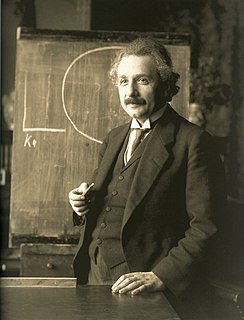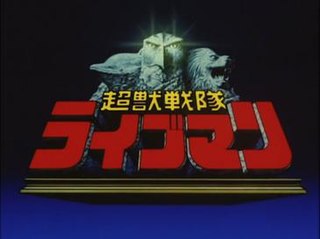Synopsis
This documentary is introduced by a set of titles informing the viewer that Albert Einstein's brain was extracted after his death in 1955 and that it was donated to the Princeton Medical Center. We then meet Kenji Sugimoto, professor of mathematics and science history at the Kinki University of Osaka, who describes what Einstein means to him: "Einstein teaches me about love as well as science. Passion, love and science. I love Albert Einstein."
He embarks on a pilgrimage to Princeton to find the legendary cerebrum. Once there, he learns that the brain has been misplaced, and the film documents his subsequent travels across the United States to recover it. The last person known to handle the item is Thomas Stoltz Harvey, a man who proves difficult to find. One lead sends Sugimoto to the Albert Einstein College of Medicine in New York City, where a former associate of Harvey's, Dr. Harry Zimmerman, informs him that Harvey is dead.
Sugimoto next tracks down Einstein's granddaughter by adoption, Evelyn Einstein. She tells him she has reason to believe she actually is biologically related to Einstein, and has been in dialogue with an institute to compare her DNA to that of the late scientist's brain. The brain sample used for this was sent from Harvey's residence in Lawrence, Kansas, giving Sugimoto a possible lead to the brain's current whereabouts.
Once in Kansas, it appears Zimmerman was misinformed; Thomas Harvey is still very much alive. Sugimoto learns Harvey's whereabouts from William S. Burroughs, the famous beat generation author, who is living in Lawrence. Sugimoto finally finds the brain, which is stored in three jars in a closet, and even acquires a small sample to bring back to Japan. He celebrates by singing karaoke in a local bar, and closes the documentary with another reflection: "I am born in Nagasaki two years after bomb. Einstein is made responsible for the bomb, but I do not blame him. I still love Albert Einstein."
The question of veracity
Because of its somewhat absurd premise and execution, Einstein's Brain's veracity has often been questioned. The notion of a brain of such fame being misplaced and subsequently found by an eccentric Japanese professor has by many been found too outrageous to be true, but aside from the regular narrativization of material found in documentaries, very little actually indicates forgery.
Kai Michel's article " Wo ist Einsteins Denkorgan?" ("Where is Einstein's Brain?"), published by Die Zeit in December 2004, shows just how easy it is to assume the film is a forgery. This article revolves around professor Michael Hagner of ETH Zürich, who after showing a group of students the film in question informs them that this is all fiction and that Kenji Sugimoto is a character. But after a phone call to a colleague he is informed that Sugimoto in fact is real, and that truth in fact is stranger than fiction. Or as Hagner himself puts it, "Nichts ist absurder als die Realität".
The documentary is lent further credibility by Michael Paterniti's 2000 book Driving Mr. Albert: A Trip Across America With Einstein's Brain, where the author tells the story of how he chauffeured Dr. Harvey across the US to deliver the brain to Evelyn Einstein. His path crosses with several persons who appeared in Einstein's Brain, including director Kevin Hull and Evelyn Einstein, and at one point he even travels to Japan and meets Sugimoto, who proudly shows off his brain sample and invites him out to a night of karaoke. If the story of Sugimoto and Harvey is a hoax, it is an elaborate one. Prof. Sugimoto died on Oct.19, 2006, in Osaka, Japan.

Albert Einstein was a German-born theoretical physicist, widely acknowledged to be one of the greatest and most influential physicists of all time. Einstein is best known for developing the theory of relativity, but he also made important contributions to the development of the theory of quantum mechanics. Relativity and quantum mechanics are together the two pillars of modern physics. His mass–energy equivalence formula E = mc2, which arises from relativity theory, has been dubbed "the world's most famous equation". His work is also known for its influence on the philosophy of science. He received the 1921 Nobel Prize in Physics "for his services to theoretical physics, and especially for his discovery of the law of the photoelectric effect", a pivotal step in the development of quantum theory. His intellectual achievements and originality resulted in "Einstein" becoming synonymous with "genius".

Kinuyo Tanaka was a Japanese actress and film director. She had a career lasting over 50 years with more than 250 credited films, and was best known for her roles in films of director Kenji Mizoguchi like The Life of Oharu and Ugetsu.

Kenji Mizoguchi was a Japanese film director and screenwriter.

The Place Promised in Our Early Days is a 2004 Japanese anime film written, produced, cinematographed, directed and edited by Makoto Shinkai in his feature film debut. Set over several years in an alternate history where the Soviet Union occupies half of Japan, it follows two childhood friends who grow apart after one of their friends disappears. As international tensions rise and a mysterious tower built by the Union starts replacing matter around it with matter from other universes, they cross paths once again and realize their missing friend might be the key to saving the world.

Choujyu Sentai Liveman is the twelfth entry of Toei Company's Super Sentai metaseries. The last Super Sentai title of the Shōwa Era, it aired on TV Asahi from February 27, 1988 to February 18, 1989. Its international English title as listed by Toei is simply Liveman.
Thomas Stoltz Harvey was an American pathologist who conducted the autopsy on Albert Einstein in 1955. Harvey later kept Einstein's brain without permission for decades.

The brain of Albert Einstein has been a subject of much research and speculation. Albert Einstein's brain was removed within seven and a half hours of his death. His apparent regularities or irregularities in the brain have been used to support various ideas about correlations in neuroanatomy with general or mathematical intelligence. Studies have suggested an increased number of glial cells in Einstein's brain.

The Crucified Lovers is a 1954 Japanese film directed by Kenji Mizoguchi. It was adapted from Monzaemon Chikamatsu's 1715 bunraku play Daikyōji mukashi goyomi. The film was presented at the 1955 Cannes Film Festival,

This Daiwa Adrian Prize is an award given by The Daiwa Anglo-Japanese Foundation, a UK charity, to scientists who have made significant achievements in science through Anglo-Japanese collaborative research. Prizes are awarded every third year and applications are handled by the foundation with an assessment conducted by a panel of Fellows of The Royal Society.

Albert Einstein has been the subject of, or inspiration for, many works of popular culture.

The Einstein family is the family of physicist Albert Einstein (1879–1955). Einstein's great-great-great-great-grandfather, Jakob Weil, was his oldest recorded relative, born in the late 17th century, and the family continues to this day. Albert Einstein's great-great-grandfather, Löb Moses Sontheimer (1745–1831), was also the grandfather of the tenor Heinrich Sontheim (1820–1912) of Stuttgart.

Hiroshi Ishiguro is director of the Intelligent Robotics Laboratory, part of the Department of Systems Innovation in the Graduate School of Engineering Science at Osaka University, Japan. A notable development of the laboratory is the Actroid, a humanoid robot with lifelike appearance and visible behaviour such as facial movements.

Summer Wars is a 2009 Japanese animated science fiction film directed by Mamoru Hosoda, produced by Madhouse, and distributed by Warner Bros. Pictures. The film's voice cast includes Ryunosuke Kamiki, Nanami Sakuraba, Mitsuki Tanimura, Sumiko Fuji and Ayumu Saitō. The film tells the story of Kenji Koiso, a timid eleventh-grade math genius who is taken to Ueda by twelfth-grade student, Natsuki Shinohara to celebrate her great-grandmother's 90th birthday. However, he is falsely implicated in the hacking of a virtual world by a sadistic artificial intelligence named Love Machine. Kenji must repair the damage done, and find a way to stop the rogue computer program from causing any further chaos.
Evelyn Einstein was the adopted daughter of Hans Albert Einstein, the son of Albert Einstein. She graduated from University of California, Berkeley with a master's degree in literature, and had several jobs in her life including animal control officer, cult deprogrammer, and reserve police officer in Berkeley, California.
Sachithanantham Sri Kantha is a Sri Lanka-born scientist, historian and bilingual author. He has been residing in Japan since 1986, and became a naturalised Japanese citizen in 2016.
Marian Diamond was a pioneering scientist and educator who is considered one of the founders of modern neuroscience. She and her team were the first to publish evidence that the brain can change with experience and improve with enrichment, what is now called neuroplasticity. Her research on the brain of Albert Einstein helped fuel the ongoing scientific revolution in understanding the roles of glial cells in the brain. Her YouTube Integrative Biology lectures were the second most popular college course in the world in 2010. She was a professor of anatomy at the University of California, Berkeley. Other published research explored differences between the cerebral cortex of male and female rats, the link between positive thinking and immune health, and the role of women in science.
Markus Mühling is a Protestant systematic theologian and philosopher of religion whose work focuses largely on the doctrine of God, eschatology, the atonement and the dialogue between the natural sciences and theology.
Sandra Freedman Witelson is a Canadian neuroscientist best known for her analysis of specimens from Albert Einstein's brain, as well as exploring anatomic and functional differences regarding male and female brains, handedness, and sexual orientation. She and her colleagues maintain the world's largest collection of "cognitively normal" brains at McMaster University in Hamilton, Ontario.
The following outline is provided as an overview of and topical guide to Albert Einstein:
Evelyn Richter was a German art photographer known primarily for social documentary photography work in East Germany. She is notable for her black & white photography in which she documented working-class life, and which often showed influences of Dadaism and futurism. Her photography is focused on people in everyday life, including children, workers, artists and musicians.











